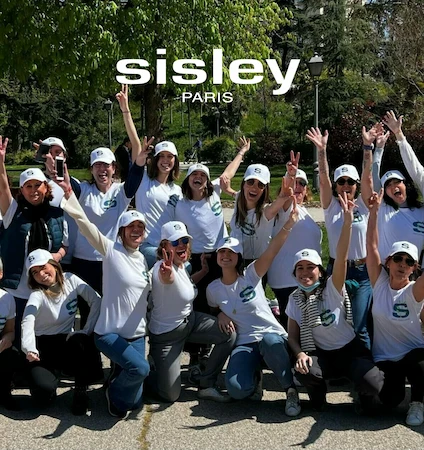In today’s dynamic and competitive job market, the pursuit of top talent has never been more intense. Employee engagement, retention, and identification with an employer’s brand and values have risen to the forefront as pivotal factors for any business. Banking and finance, in particular, has been significantly affected by these trends, necessitating a tailored approach to employee wellbeing in the banking sector. This blog post explores how a well-crafted employer branding and employee engagement strategy, combined with innovative ideas and the use of digital tools like teroGO, can foster a happier and more engaged workforce in the banking sector.
Employee Wellbeing in the Banking Sector: Unique Challenges
While the importance of employee wellbeing is now recognized across various industries, the banking sector is experiencing a unique shift. In an era marked by unprecedented technological advancements, a changing generational landscape, and evolving employee preferences, the banking industry has had to reevaluate its approach to talent management.
Often characterized by demanding work schedules and high-pressure environments, the sector faces its own set of challenges when it comes to employee wellbeing. The traditional allure of prestigious and secure banking jobs has evolved, especially for the new generation entering the workforce. Banking careers may no longer hold the same appeal, and young professionals are seeking employers who offer work environments that promote a balanced lifestyle and where work serves a higher purpose – something banks do but that the industry is not really marketing well enough.
As an example, according to a recent survey, 68% of millennials prioritize work-life balance over financial compensation when considering job opportunities in the financial sector. This shift highlights the need for banking institutions to adapt and cater to the evolving preferences of their employees.
Crafting a Tailored Employee Wellbeing Strategy for Banks
To enhance employee wellbeing in the banking sector, a thoughtful employer branding and employee engagement strategy is essential, particularly in consideration of the changing generational landscape. Here are four key components to consider:
Clear Communication of Values: Ensure that your organization’s purpose, values and commitment to employee wellbeing are communicated effectively. Promote a culture of transparency and support that aligns with these values.
Flexible Work Arrangements: Provide flexible work options to accommodate the work-life balance preferences of the new generation. This flexibility can reduce stress and increase job satisfaction.
Wellness Initiatives: Implement wellness programs that focus on physical health, mindfulness, sustainability, and social impact. These initiatives not only improve employee health but also foster a sense of purpose and community.
Digital Tools for Engagement: Leverage digital tools like teroGO to create virtual employee engagement challenges and programs. These initiatives cater to the tech-savvy generation, fostering a sense of connection and accomplishment, even in remote or dispersed teams.
Innovative Ideas for Employee Wellbeing in the banking sector
As a player in the wellbeing market ourselves, we at teroGO are happy to help and come up with creative ideas to address the wellbeing component in creative ways:
Virtual Employee Engagement Challenges: Organize virtual challenges using platforms like ours. These challenges can focus on physical health, sustainability, mindfulness, and social impact. Employees can participate in fun and interactive activities, fostering teamwork and a sense of accomplishment.
Mental Health Support: Offer mental health resources and counseling services to employees, recognizing that the new generation values mental wellbeing. Ensure that they know how to access these services without fear of judgment. Resources like these can easily be shared on teroGO as well.
Financial Wellness Programs: Provide financial wellness workshops to help your employees and their families manage their finances effectively. These programs can address financial stress, a concern as common in the banking sector as in other industries, and cater to the financial acumen of new generations.
Community Involvement: Encourage employees to participate in community service projects. This not only contributes to social impact but also enhances employee morale and a sense of purpose, a key motivator for the incoming generation.
The Power of Digital Strategies and Employee Wellbeing Tools
Digital strategies, coupled with employee engagement and wellbeing platforms like teroGO, are exceptionally effective in addressing the unique challenges faced by the banking sector, particularly in attracting and retaining new generations of talent. By creating virtual employee engagement challenges and programs, organizations can tackle multiple issues simultaneously.
Virtual challenges help employees feel connected, valued, and part of a larger community, even when working remotely. These challenges not only improve physical health but also support sustainability, mindfulness, and social impact – areas that resonate with modern professionals.
Moreover, virtual engagement initiatives demonstrate to employees and the community that the organization deeply cares about their wellbeing and is willing to invest in it. This builds a strong employer brand and fosters a sense of loyalty and belonging among the new generation entering the workforce.
If you want to know more about teroGO, our corporate challenges or our fully-fletched wellbeing platform schedule a quick chat o try it for free. In any case, we are happy to help you make a positive impact for you and your organization!
This website stores cookies on your computer. These cookies are used to collect information about how you interact with our website and allows us to remember you. We use this information in order to improve and customize your browsing experience and for analytics and metrics about our visitors both on this website and other media. To find out more about the cookies we use, please see our Política de privacidad.















